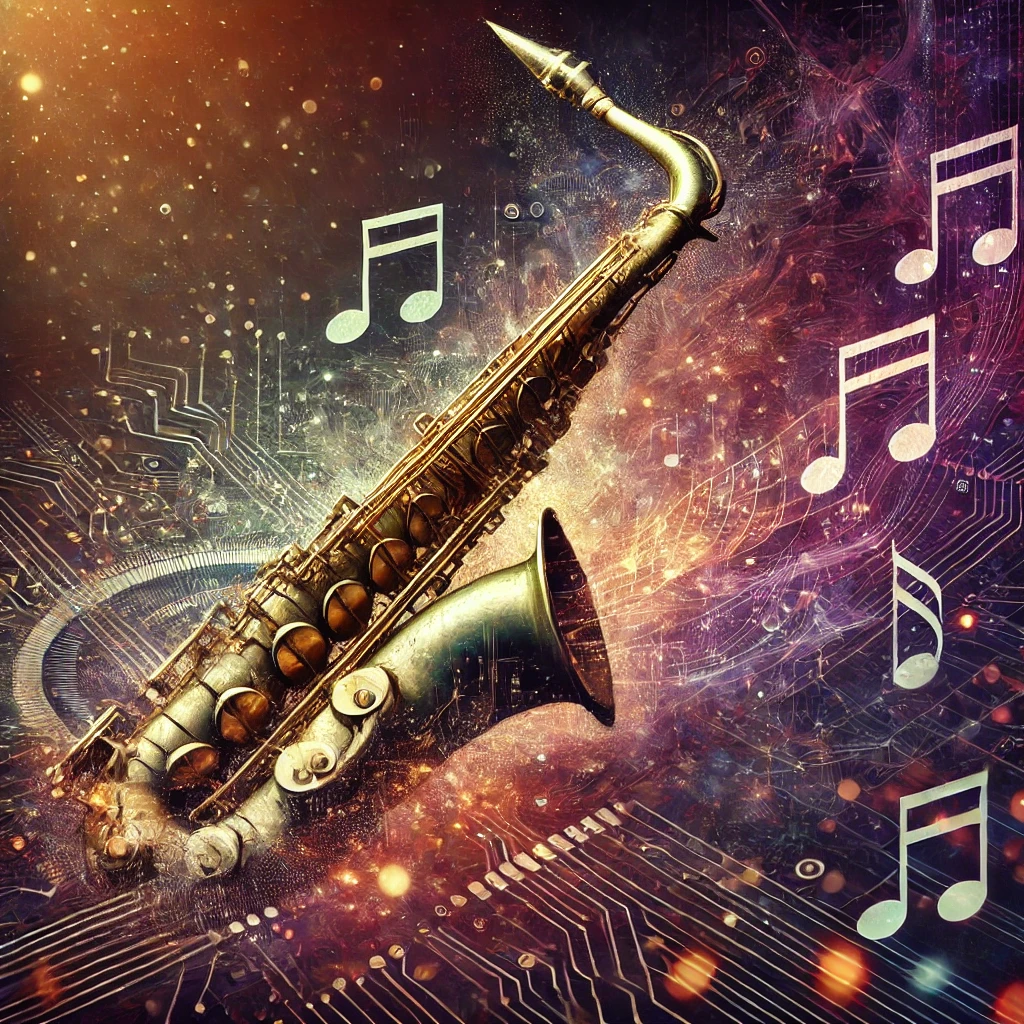Riffing on Reality: Jazz as the Original Algorithmic Playground
Imagine Miles Davis walking into a Silicon Valley startup, looking around, and being like, “Yeah, I invented this whole internet thing decades ago—just with a trumpet instead of a keyboard.” Wild, right? But hear me out. Jazz isn’t just music; it’s basically the original real-time collaborative network, where musicians communicate through spontaneous, adaptive patterns that look suspiciously like how our digital world operates.
You ever notice how a jazz combo works? Five people who barely rehearsed somehow create this cosmic conversation on stage, building on each other’s ideas without any Google Doc to coordinate. That’s because jazz improvisation is essentially live coding, but with sound instead of software. Musicians listen, respond, interrupt, and create new pathways mid-performance—just like how social media algorithms dynamically reshape content based on instantaneous interactions. Every saxophone solo is basically a protocol negotiation, every rhythm section a distributed computing system playing out in real-time.
Think about it—when Charlie Parker shredded through chord changes at lightning speed, he was essentially processing information faster than any human reasonably should. His brain was doing real-time musical calculations that would make early computers weep silicon tears. Jazz improvisation predicted our digital communication networks decades before the first router started blinking.
And let’s be honest, the best jazz has always been slightly high anyway—elevated consciousness exploring patterns that straight thinking just can’t access. The trumpet player who suddenly goes off on a tangential solo that somehow circles back to the main theme? That’s literally how our internet browsing works, my friend.
Syncopated Signals: How Improvisation Became Information Architecture
And let’s talk about genre evolution for a second. Jazz improvisation predicted our digital communication ecosystem by emerging from complex cultural interactions, much like how communication technologies develop. African rhythmic traditions, European harmonic structures, blues emotional landscapes—all remixed into something completely new. Sound familiar? It’s basically how the internet works: taking existing protocols, cultural references, and technological frameworks, then creating something that blows everyone’s mind.
Musicians like John Coltrane were basically human APIs, constantly negotiating between established musical language and radical new expression. His album “A Love Supreme” isn’t just a record—it’s a blueprint for decentralized communication systems. Each musician contributes independently while maintaining an intricate, responsive collective intelligence.
But here’s where it gets really cosmic: what happens in jazz when someone messes up? The band doesn’t crash like some poorly coded website. Instead, the “error” becomes a new direction, a fresh path to explore. The entire system adapts in milliseconds. That’s some next-level resilient design that even our best digital systems still struggle to achieve.
When Thelonious Monk deliberately hit “wrong” notes that somehow sounded exactly right, he was demonstrating how jazz improvisation predicted our digital communication paradoxes—where chaos and structure aren’t opposites but necessary partners. His dissonant harmonies and unpredictable rhythms created a higher-order communication system that embraced complexity rather than simplifying it.
The Freestyle Protocol: Communication Beyond Linear Thinking
Music style analysis reveals something profound: jazz teaches us that meaningful communication isn’t about rigid structures, but adaptive, responsive interactions. In a jazz ensemble, no single performer controls the entire narrative. Instead, they create meaning through constant negotiation, interruption, and collaborative reimagining.
Social media platforms? They’re just digital jazz bands. Tweets are like trumpet solos—quick, spontaneous, potentially transformative. Hashtags are chord progressions. Viral moments are unexpected musical breaks that suddenly captivate everyone’s attention. We’re all just improvisational communicators now, riffing on each other’s ideas in real-time.
Duke Ellington’s orchestra was essentially an early version of the internet—a network of distinctive voices that somehow formed a unified whole without sacrificing individual expression. When the orchestra created those lush, complex harmonies, they weren’t just making music; they were demonstrating how diverse, even contradictory elements can create coherent meaning when they follow certain improvisational protocols.
The most mind-blowing part? How jazz improvisation predicted our digital communication wasn’t even intentional. Jazz musicians weren’t trying to create models for future technology—they were just trying to have a conversation that transcended the limitations of words. In doing so, they accidentally invented the operational principles that would later define how we interact in digital spaces.
Bonus Whoa Moment: The Cosmic Jazz Connection
Ever wonder if the universe itself is just an infinite, ongoing jazz performance? Particles improvising, galaxies soloing, cosmic rhythms constantly reshaping reality. Mind. Blown.
Quantum physicists are basically describing jazz when they talk about particles existing in multiple states simultaneously. The uncertainty principle? That’s just science catching up to what jazz musicians already knew—that precision and spontaneity aren’t enemies but dance partners in a cosmic club.
When you really think about it, jazz improvisation predicted our digital communication networks in the same way that dreams sometimes predict our future—not through mystical foresight, but because they tap into patterns so fundamental to human experience that they’re bound to manifest in multiple domains.
The next time you’re doomscrolling through your social feeds, encountering unexpected connections and bizarre tangents that somehow still feel like a coherent experience, remember: you’re not just on the internet. You’re participating in a jam session that started with Louis Armstrong and continues through every digital interaction we have today.
Now if you’ll excuse me, I need to go listen to some Miles Davis and contemplate how his trumpet solos predicted blockchain technology. Or maybe I’ll just enjoy the music, man.
This piece was written while contemplating the cosmic connections between bebop and binary code. No algorithms were harmed in the making of this article, though several were deeply confused.
